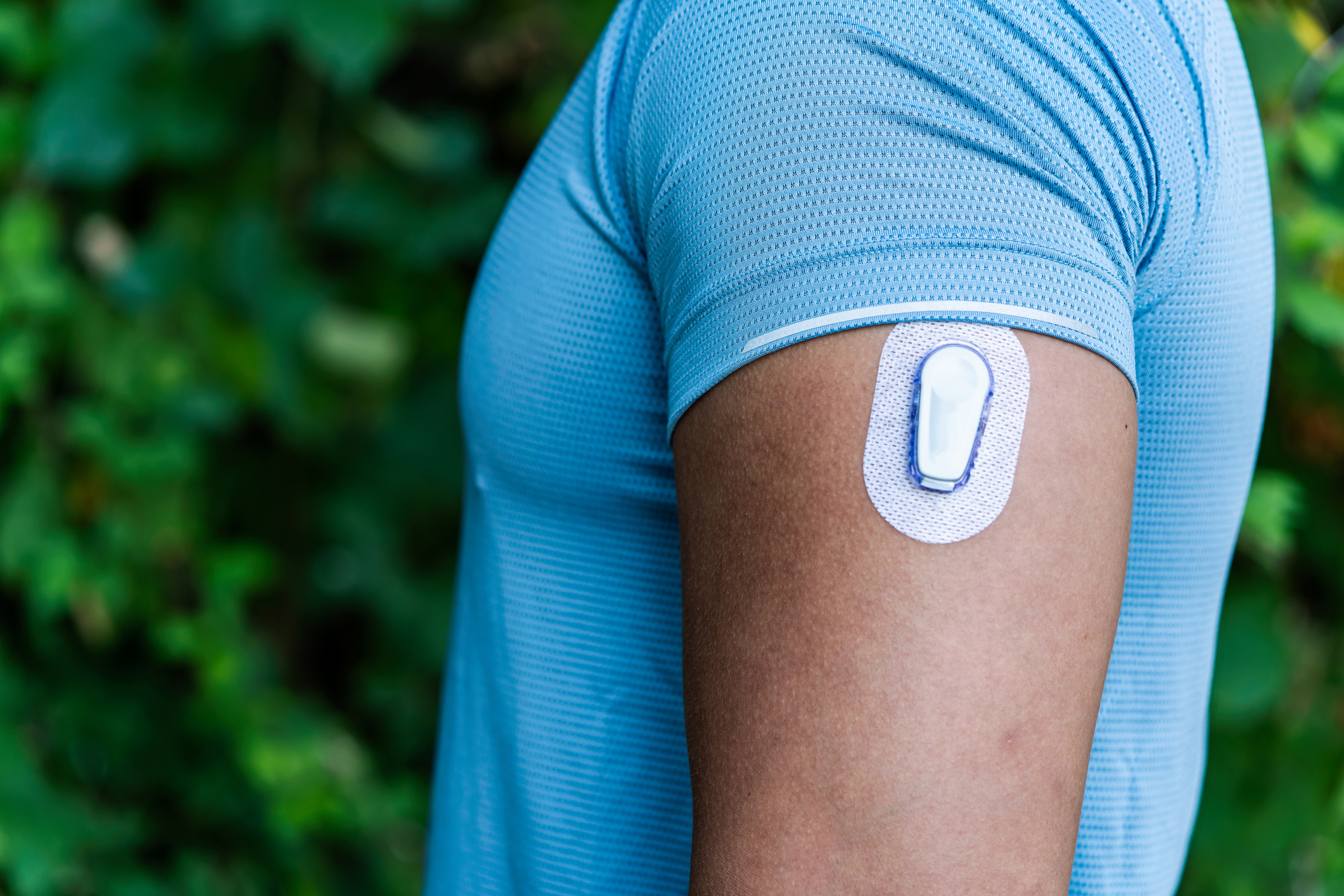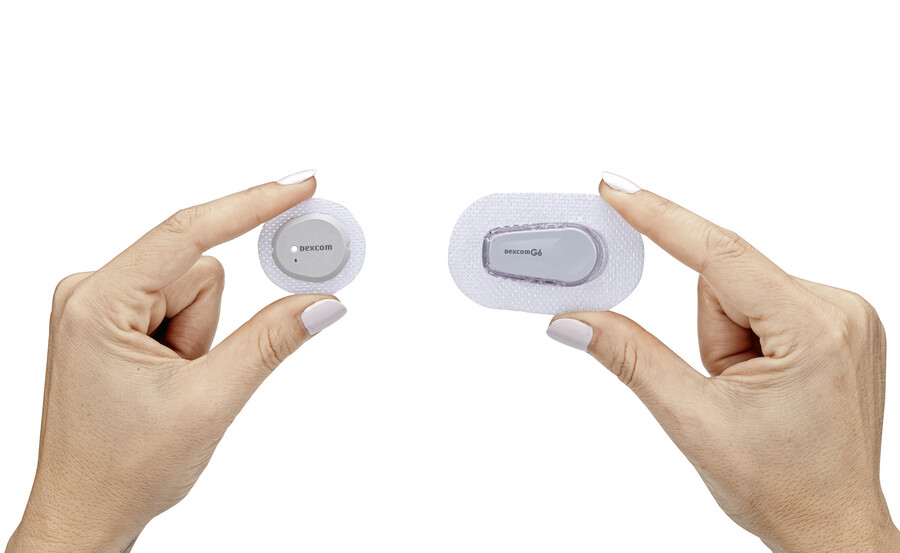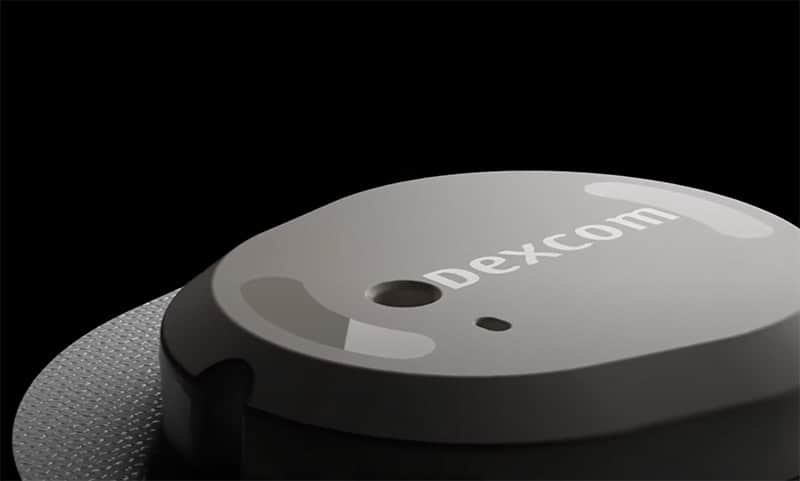




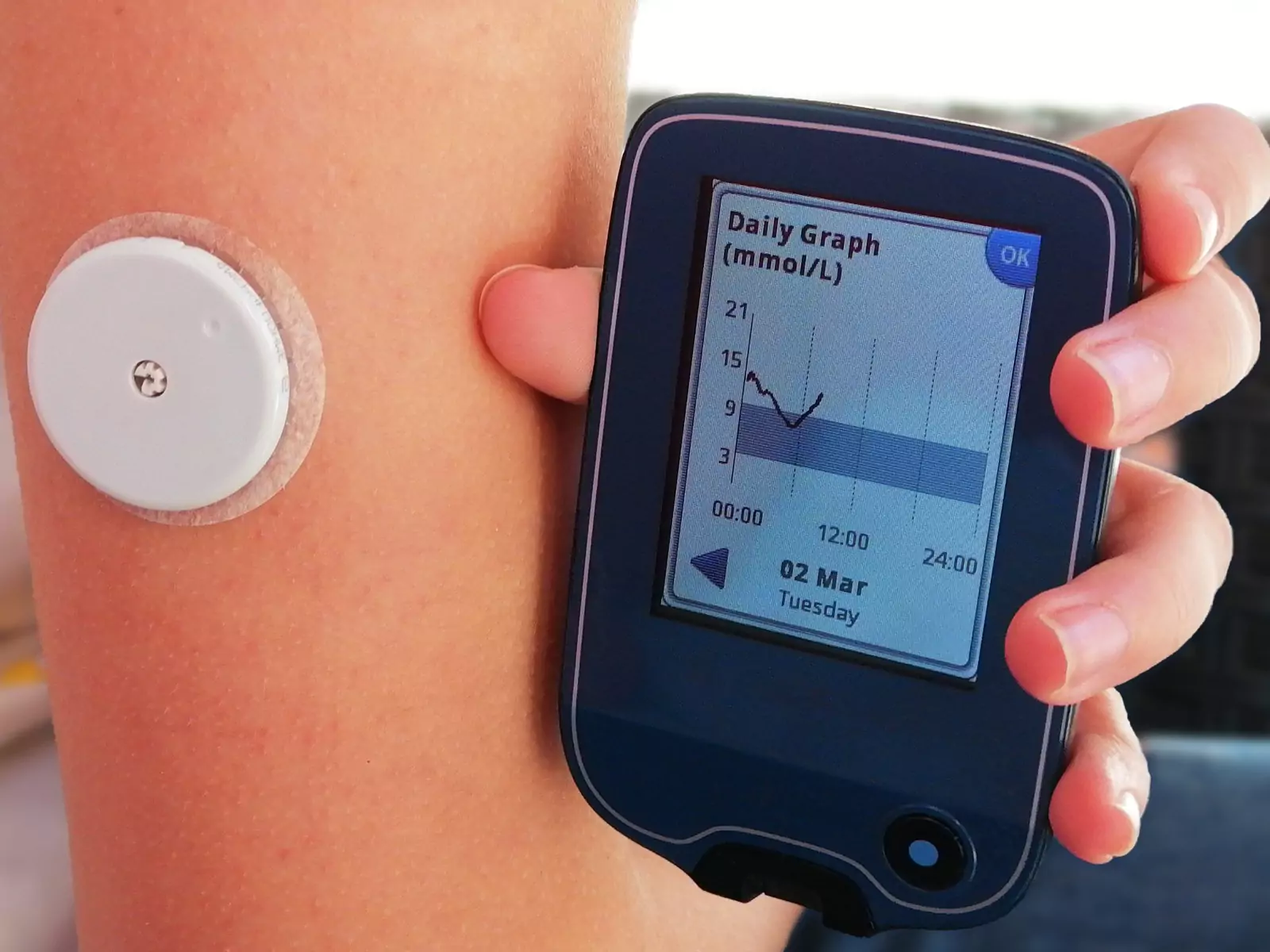
Can I Use a Dexcom for More Than 10 Days?


Table of Contents
- What is Dexcom and How Does It Work?
- Functionality of the Dexcom
- Components: A look at the sensor, transmitter, and display device
- The 10-Day Usage Recommendation
- Sensor Calibration
- Accuracy Over Time
- Extending the Life of Your Dexcom Sensor: Pros and Cons
- Drawbacks of Extending Sensor Life
- Safety Concerns and Recommendations
- Medical Advice
- Skin Health
- Accuracy and Reliability
- The Financial Aspect: Cost and Insurance Coverage
- Insurance Coverage: The Role in Decision Making
- SugarMD Super Berberine
- A Deeper Dive into Dexcom's Financial Aspects
- Conclusion
- Further Reading:
- About The Author
The Dexcom Continuous Glucose Monitoring (CGM) system has revolutionized the way people with diabetes manage their blood sugar levels. With real-time glucose readings and trend data, it offers users a comprehensive view of their glucose patterns.
But one question that often arises is: Can I use a Dexcom sensor for more than its recommended 10-day period? Let's delve into this topic and understand the nuances. By the end, you'll also be curious about the cost implications and insurance coverage for Dexcom, which we'll touch upon and then direct you to a detailed article on the subject.
What is Dexcom and How Does It Work?
Dexcom, a pioneer in the realm of diabetes management, has introduced a groundbreaking solution for those grappling with the challenges of this condition. The Continuous Glucose Monitoring (CGM) system by Dexcom stands out as a beacon of innovation in a sea of diabetes management tools.
Unlike traditional glucose meters that require fingerstick tests and offer only a snapshot of blood sugar levels, Dexcom's CGM provides a continuous stream of glucose data, painting a more comprehensive picture of a user's glucose trends throughout the day and night.
Functionality of the Dexcom
The core functionality of the Dexcom CGM system lies in its ability to provide real-time glucose readings. This is achieved through a tiny sensor inserted just beneath the skin, typically on the abdomen or upper arm. This sensor measures the glucose levels in the interstitial fluid (the fluid between cells) every few minutes.
The data is then wirelessly transmitted to a display device, which could be a dedicated receiver, a smartphone, or even a smartwatch. The benefits of such real-time monitoring are manifold:
- Immediate Feedback: Users can instantly see the impact of meals, exercise, medications, and other factors on their glucose levels. This immediate feedback allows for more informed decisions regarding insulin doses, food choices, and activity levels.
- Trend Analysis: The system doesn't just show current glucose levels; it displays trends, indicating whether glucose is rising, falling, or stable. This predictive insight can be invaluable in preventing hypoglycemia (low blood sugar) or hyperglycemia (high blood sugar) episodes.
- Alerts and Alarms: One of the standout features of the Dexcom CGM is its customizable alerts. Users can set thresholds, and the system will sound an alarm if glucose levels go too high or too low. This is especially beneficial during the night, ensuring that dangerous glucose fluctuations don't go unnoticed.
- Data Compilation: Over time, the system compiles vast amounts of data, which can be analyzed to identify patterns, optimize treatment plans, and improve overall diabetes management.
Components: A look at the sensor, transmitter, and display device
The Dexcom CGM system is a symphony of components working in harmony to deliver unparalleled glucose monitoring. Let's break down these components:
- Sensor: The heart of the system, the Dexcom sensor, is a small, flexible device that is inserted just beneath the skin. It's designed to be discreet and comfortable, with many users reporting that they hardly notice it's there. The sensor is responsible for measuring glucose levels in the interstitial fluid and has a lifespan of 10 days, after which it needs to be replaced.
- Transmitter: Attached to the sensor is the transmitter, a small electronic device that collects data from the sensor and wirelessly sends it to the display device. The transmitter is reusable and has a battery life that spans several months.
- Display Device: The display device is where users can view their glucose data in real-time. Dexcom offers a dedicated receiver for this purpose, but the system is also compatible with many smartphones and smartwatches. Through the Dexcom app, users can view their current glucose level, trend graphs, and receive alerts. Additionally, the app allows for data sharing, meaning that loved ones or caregivers can remotely monitor a user's glucose data, providing an added layer of support and peace of mind.
The 10-Day Usage Recommendation
Dexcom, as a leading manufacturer of Continuous Glucose Monitoring (CGM) systems, has invested significant resources into research and development to ensure the safety and efficacy of its products. The 10-day usage recommendation for their sensors is not arbitrary; it's grounded in extensive clinical testing and data analysis.
The primary reason behind this recommendation is to ensure that users receive the most accurate and reliable glucose readings. The sensor, which is inserted under the skin, measures glucose levels in the interstitial fluid. Over time, the body's natural processes can affect the sensor's ability to provide precise readings.
For instance, the body's immune response can lead to the formation of proteins around the sensor, potentially impacting its performance. Moreover, the 10-day period also takes into account the wear and tear on the adhesive that keeps the sensor in place. Ensuring the sensor remains securely attached is crucial for consistent readings. By recommending a 10-day limit, Dexcom aims to strike a balance between user convenience and the device's optimal performance.
Sensor Calibration
The science behind the Dexcom sensor's functionality is intricate. The sensor works by using an enzyme that reacts with glucose to produce a small electrical current. This current is then read by the transmitter, which calculates the glucose level based on the strength of the current. However, the enzyme on the sensor is not infinite.
Over time, it degrades, which can affect the strength and reliability of the electrical current it produces. The 10-day usage period is, in part, determined by the lifespan of this enzyme under typical body conditions. Additionally, the sensor undergoes a calibration process, which aligns it with blood glucose readings to ensure accuracy.
This calibration is optimized for the sensor's intended lifespan. Using the sensor beyond this period might mean that the calibration becomes less reliable, leading to potential discrepancies between the CGM readings and actual blood glucose levels.
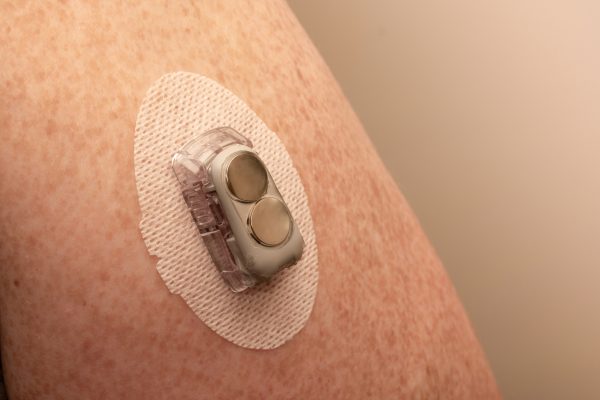
Accuracy Over Time
Accuracy is paramount when it comes to glucose monitoring. Even slight inaccuracies can lead to significant consequences, especially for individuals who rely on their CGM data to make insulin dosing decisions. As previously mentioned, the enzyme responsible for the sensor's glucose reaction degrades over time. Beyond the 10-day mark, there's an increased risk that the readings might not reflect the actual glucose levels accurately.
This decline in accuracy is not always immediate or noticeable, which makes it even more concerning. A user might believe they're receiving accurate data when, in reality, there could be a growing margin of error. Furthermore, the body's natural healing processes can also play a role in this decline. As the body recognizes the sensor as a foreign object, it might encapsulate it in fibrous tissue over time, potentially affecting the sensor's ability to access and measure glucose in the interstitial fluid.
Extending the Life of Your Dexcom Sensor: Pros and Cons
- Potential Cost Savings: One of the most apparent benefits of extending the life of the Dexcom sensor is the potential cost savings. Given that the sensors are a recurring expense, even a few days of extended use can lead to significant savings over time. For instance, if a user were to extend the life of each sensor by three days, they could potentially save the cost of around 12 sensors in a year.
- Reduced Frequency of Sensor Changes: Changing the sensor can sometimes be an inconvenient process, especially for those with busy lifestyles or those who may find the procedure slightly uncomfortable. By extending the life of the sensor, users can reduce the number of times they have to go through the sensor-changing process in a year. This not only saves time but also reduces the mental load of having to remember and prepare for sensor changes.
Drawbacks of Extending Sensor Life
However, like all things, there are two sides to this coin. While there are benefits to extending the life of the Dexcom sensor, there are also potential drawbacks that users should be aware of:
- Potential Skin Irritation: One of the most common issues reported by users who extend the life of their sensors is skin irritation. The adhesive used to keep the sensor in place can cause redness, itching, or even rashes when left on the skin for extended periods. Over time, this can lead to more severe skin conditions or infections if not addressed promptly.
- Reduced Accuracy: The Dexcom sensor is calibrated to provide accurate readings for a 10-day period. Beyond this timeframe, the accuracy of the glucose readings can start to decline. This poses a risk, especially for those who rely heavily on their CGM data to make insulin dosing decisions. Using inaccurate data can lead to incorrect dosing, which can have serious health implications.
- Risk of Sensor Failure: Extending the life of the sensor also increases the risk of sensor failure. This can result in periods where the user does not receive any glucose readings, leaving them without the critical data they need to manage their diabetes effectively.
In essence, while there are clear benefits to extending the life of the Dexcom sensor, it's essential to weigh these against the potential risks. Every individual's experience may vary, and what works for one person might not work for another. It's always recommended to consult with a healthcare professional before making any decisions regarding the extended use of medical devices.
Safety Concerns and Recommendations
Medical Advice
The decision to use any medical device, including the Dexcom sensor, should never be taken lightly. While the internet is a treasure trove of personal experiences and anecdotes, it's crucial to remember that individual reactions and results can vary widely.
This is where the expertise of healthcare professionals becomes invaluable. Firstly, doctors and diabetes educators are trained to understand the intricacies of devices like Dexcom. They are aware of the latest research, updates from the manufacturer, and any reported issues from extended use. By consulting with them, you can get a personalized recommendation based on your health profile, lifestyle, and specific needs.
Skin Health
One of the most immediate concerns with using a Dexcom sensor beyond the recommended 10 days is the impact on skin health. The sensor, which is inserted just beneath the skin, can cause several issues if worn for extended periods. Skin Irritation: Over time, the adhesive that keeps the sensor in place can cause skin irritation.
This can manifest as redness, itching, or even a rash. For some individuals, this irritation can be mild, but for others, it can be severe enough to warrant immediate removal of the sensor. Infections: Any time a foreign object is introduced to the body, there's a risk of infection.
The longer the sensor stays in place, the higher the chance that bacteria could enter the insertion site. Signs of an infection include swelling, increased redness, warmth at the site, or discharge. If any of these symptoms are observed, it's crucial to remove the sensor and consult a doctor immediately. Allergic Reactions: Some individuals might be allergic to the materials used in the sensor or adhesive. Extended wear can exacerbate allergic reactions, leading to more severe skin issues.
Accuracy and Reliability
The primary purpose of the Dexcom sensor is to provide accurate and reliable glucose readings. However, the integrity of these readings can be compromised with extended use. Over time, the sensor's ability to measure glucose levels might diminish. This is due to several factors, including the natural degradation of the sensor's components and potential interference from the body's immune response.
As the sensor ages beyond its recommended usage period, there's a higher likelihood of receiving inaccurate readings. Inaccurate glucose readings can have serious implications. For individuals who rely on their Dexcom for insulin dosing decisions, an incorrect reading could lead to incorrect dosing. This could result in dangerously high or low blood sugar levels, both of which carry significant health risks.
Furthermore, reliability is key when it comes to managing diabetes. If you can't trust the readings from your sensor, it defeats the purpose of having a CGM system in the first place. It's essential to have confidence in the data you're receiving, and using the sensor beyond 10 days might erode that trust.
The Financial Aspect: Cost and Insurance Coverage
Insurance Coverage: The Role in Decision Making
The decision to extend the life of a Dexcom sensor beyond its recommended 10-day period is not solely based on medical or personal comfort reasons. Financial considerations, especially the cost of sensors and how often they need to be replaced, play a significant role in this decision. This is where insurance coverage becomes a pivotal factor.
- Coverage Variability: Not all insurance plans cover the Dexcom CGM system in the same way. While some might offer comprehensive coverage, including the cost of sensors, transmitters, and even supplementary supplies, others might only cover a portion of the expenses.
- Out-of-Pocket Costs: Even with insurance, users might still face out-of-pocket costs. Deductibles, co-payments, and coverage limits can affect how much a user ultimately pays for their Dexcom system and supplies.
- Pre-authorization Requirements: Some insurance providers might require pre-authorization before covering the Dexcom system. This often involves proving the medical necessity of the CGM system, which can be a time-consuming process.
- The Extension Dilemma: For users who find their insurance coverage lacking or face high out-of-pocket costs, the idea of extending the life of a sensor becomes even more appealing. However, it's essential to weigh the financial benefits against potential health risks.
SugarMD Super Berberine

Additionally, this formula is safe and effective for long-term use. Regular use of this product will lead to a significant reduction in inflammation, which is a well-known contributor to a wide range of health issues. If you're looking for a supplement that can help you maintain healthy glucose levels while reducing inflammation, SugarMD Super Berberine is the perfect choice.
A Deeper Dive into Dexcom's Financial Aspects
While this article provides a brief overview of the financial considerations associated with the Dexcom CGM system, it's crucial for users to have a comprehensive understanding, especially when making decisions that can impact both their health and their wallets.
For those looking to delve deeper into the costs associated with Dexcom, as well as a detailed breakdown of insurance coverage options, we highly recommend exploring this in-depth article. It offers insights into the various factors that can influence the overall cost of using Dexcom, from insurance policies to potential discounts and assistance programs.
Conclusion
The decision to extend the use of a Dexcom sensor beyond its recommended 10-day period is not one to be taken lightly. Every user's experience with the Dexcom system is unique, and while some may find extended use beneficial, others might encounter challenges. It's crucial to weigh the pros, such as potential cost savings and reduced frequency of sensor changes, against the cons, which might include reduced accuracy and potential skin irritations.
Before making any decision, it's essential to consider your personal health needs, the reliability of the readings, and any advice or recommendations from your healthcare provider. In the rapidly evolving world of medical technology, staying updated is of paramount importance. Manufacturers continually refine and update their products based on new research, user feedback, and technological advancements.
As a Dexcom user, it's your responsibility to stay informed about any changes or updates to the product guidelines. This not only ensures that you're getting the most accurate readings but also that you're using the product in a way that's safe for your health. Regularly consulting with your healthcare provider and checking the official Dexcom website can provide you with the latest recommendations and guidelines.
Further Reading:
Understanding the technical and health aspects of the Dexcom system is just one part of the equation. The financial implications, including the cost of the system and how it's covered by insurance, play a significant role in many users' decisions.
To get a comprehensive view of these financial aspects, we strongly encourage you to delve deeper by exploring this detailed article on Dexcom's costs and insurance coverage. It provides valuable insights that can help you make a well-informed decision about your continued use of the Dexcom system.
About The Author
Meet Dr. Ahmet Ergin a highly skilled and dedicated endocrinologist with a passion for diabetes care. Dr. Ergin earned his medical degree with honors from Marmara University in Istanbul. He completed internal medicine residency and endocrinology fellowship at Cleveland Clinic.
Dr. Ergin is board-certified in Internal Medicine, Endocrinology, Diabetes, and Metabolism due to his vast medical expertise. He's a certified diabetes educator, author of "The Ultimate Diabetes Book," and founder of "the SugarMD YouTube channel."
Dr. Ergin offers exceptional diabetes care to his patients in Port Saint Lucie, FL, helping them manage effectively. Disclaimer: These statements have not been evaluated by the Food and Drug Administration. Information on this website isn’t intended to treat, cure or prevent any disease. Discuss with your doctor and do not self-treat.
Written By Dr. Ahmet Ergin
461 total articles
Meet Dr. Ahmet Ergin, a highly skilled and dedicated endocrinologist with a passion for diabetes care. Dr. Ergin earned his medical degree with honors from Marmara University in Istanbul. He completed internal medicine residency and endocrinology fellowship at Cleveland Clinic. Dr. Ergin is board-certified in Internal Medicine, Endocrinology, Diabetes, and Metabolism due to his vast medical expertise. He's a certified diabetes educator, author of “The Ultimate Diabetes Book,” and founder of “the SugarMD YouTube channel.” Dr. Ergin offers exceptional diabetes care to his patients in Port Saint Lucie, FL, helping them manage effectively. For a closer look into his insights and experiences, connect with Dr. Ahmet Ergin on LinkedIn, Instagram, and YouTube.”
Disclaimer: These statements have not been evaluated by the Food and Drug Administration. Information on this website isn't intended to treat, cure or prevent any disease. Discuss with your doctor and do not self-treat.
Products





